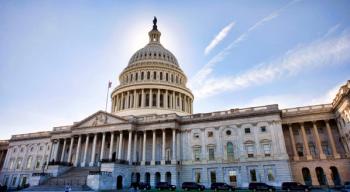
Enrollment numbers ease risk fears
Officials believe the risk pools are solid
When all was said and done, 2014 exchange enrollments had reached 8 million for qualified health plans, 4.8 million in Medicaid and Children’s Health Insurance Program, and an estimated 5 million outside of the exchanges. According to administration officials, the federal and state websites saw 98 million visits, and call centers fielded 33 million calls.
While some states fell short of target projections, officials believe the risk pools are solid, and emphasize that health plans also have risk adjustment, reinsurance, and risk corridors to stabilize premiums in the future.
“All of the projections we are familiar with suggest that the pool of individuals across the states that have picked a plan and enrolled is sufficient to have produced a stable risk pool around which premiums and products will be priced,” according to Michael Hash, the outgoing director of the Department of Health and Human Services’ (HHS) Office of Health Reform. “We believe based on the data that we’ve seen-independent data that is out there-premiums will be stable and the risk pool is sufficiently large and varied to support that kind of pricing … in every state.”
Risk adjustment includes those who enroll inside and outside the exchanges, so the five million who went directly to plans or through another channel are included in the population. HHS will have data on the size of the risk pool in each state as insurers report their enrollments for medical loss ratio, rate review and risk adjustment purposes over the course of the next year.
Health plans have reported consistently that 80% to 90% of members enrolling in a plan have paid their premiums to activate coverage.
Last-minute crush
“We’re hopeful the states that haven’t yet expanded Medicaid will decide to come onboard so we can cover millions more people,” Kathleen Sebelius, outgoing secretary of HHS, said in a press call. “We were able to get so many covered because of an unprecedented outreach and enrollment effort that focused on some of our most vulnerable and underinsured populations.”
Sebelius traveled to 100 cities across the country on an awareness tour during the 27-week open-enrollment period. As expected, a last-minute crush of people enrolled in the final month.
“In more than a dozen states, enrollment doubled since March 1,” Julie Bataille, director of the Office of Communications for the Centers for Medicare and Medicaid Services (CMS) said in a press call. “For example, we saw some of the largest surges in enrollment in Texas, Florida and Georgia in the final weeks of open enrollment.”
The picture varies widely from state to state for a number of reasons, including glitchy exchange platforms, which was the case in Colorado, Nevada, and Maryland.
For example, Maryland’s platform cost $125.5 million, and it crashed minutes after opening. The state’s governing board has since voted to scrap the entire system and replace it with a new one for 2015. About 40,000 residents had signed up through mid-March, and open enrollment was extended until April 18 to allow those who were stuck in the queue to complete their selections. Ultimately, Maryland’s enrollment reached 67,757, according to CMS.
Newsletter
Get the latest industry news, event updates, and more from Managed healthcare Executive.





















































